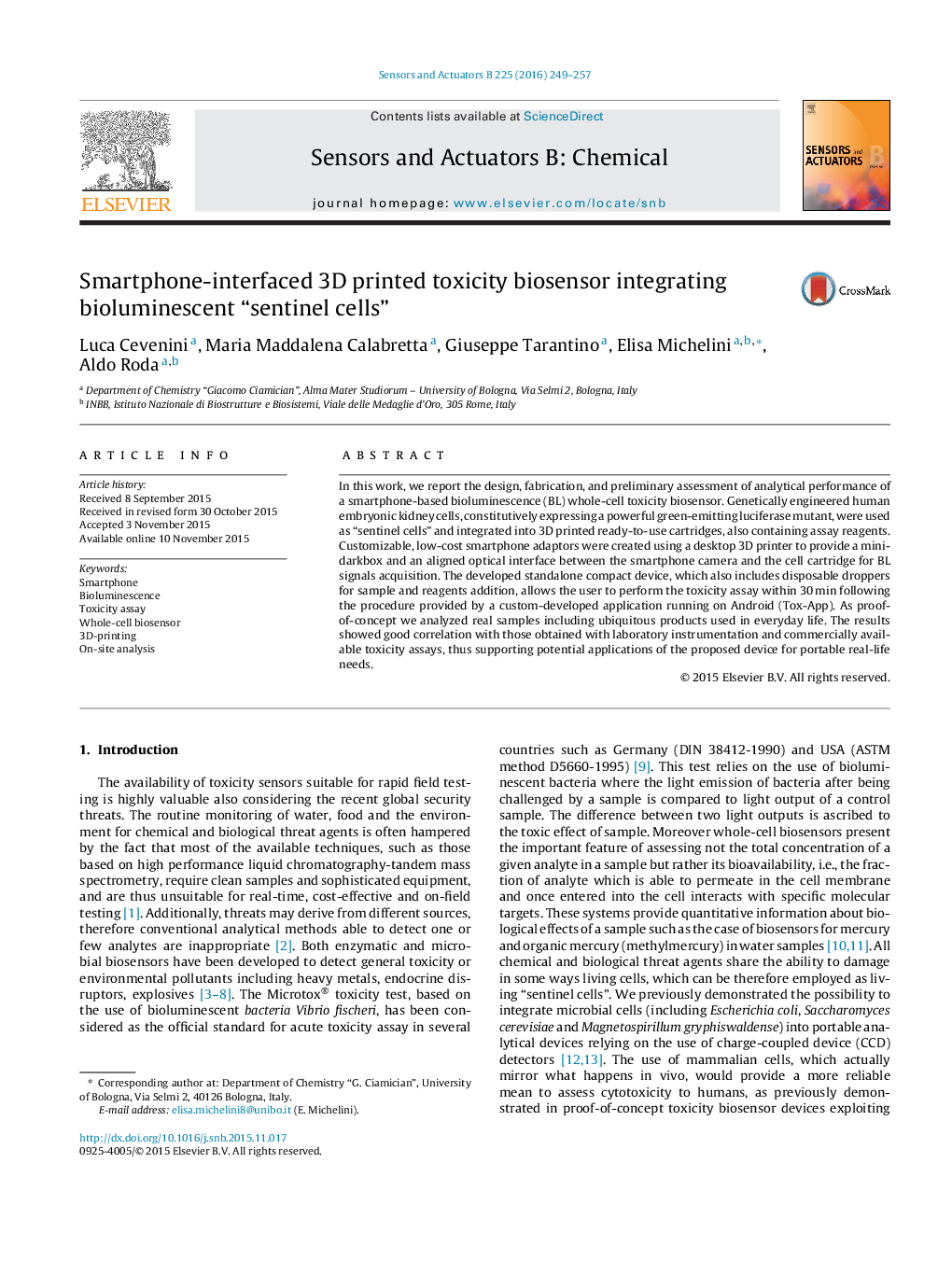| Article ID | Journal | Published Year | Pages | File Type |
|---|---|---|---|---|
| 744199 | Sensors and Actuators B: Chemical | 2016 | 9 Pages |
•Smartphone-interfaced biosensors represent a very promising research field.•Bioluminescence whole-cell biosensors can be exploited as reliable analytical tools for toxicity assays.•A 3D printed smartphone-based bioluminescence whole-cell toxicity biosensor is reported.
In this work, we report the design, fabrication, and preliminary assessment of analytical performance of a smartphone-based bioluminescence (BL) whole-cell toxicity biosensor. Genetically engineered human embryonic kidney cells, constitutively expressing a powerful green-emitting luciferase mutant, were used as “sentinel cells” and integrated into 3D printed ready-to-use cartridges, also containing assay reagents. Customizable, low-cost smartphone adaptors were created using a desktop 3D printer to provide a mini-darkbox and an aligned optical interface between the smartphone camera and the cell cartridge for BL signals acquisition. The developed standalone compact device, which also includes disposable droppers for sample and reagents addition, allows the user to perform the toxicity assay within 30 min following the procedure provided by a custom-developed application running on Android (Tox-App). As proof-of-concept we analyzed real samples including ubiquitous products used in everyday life. The results showed good correlation with those obtained with laboratory instrumentation and commercially available toxicity assays, thus supporting potential applications of the proposed device for portable real-life needs.
